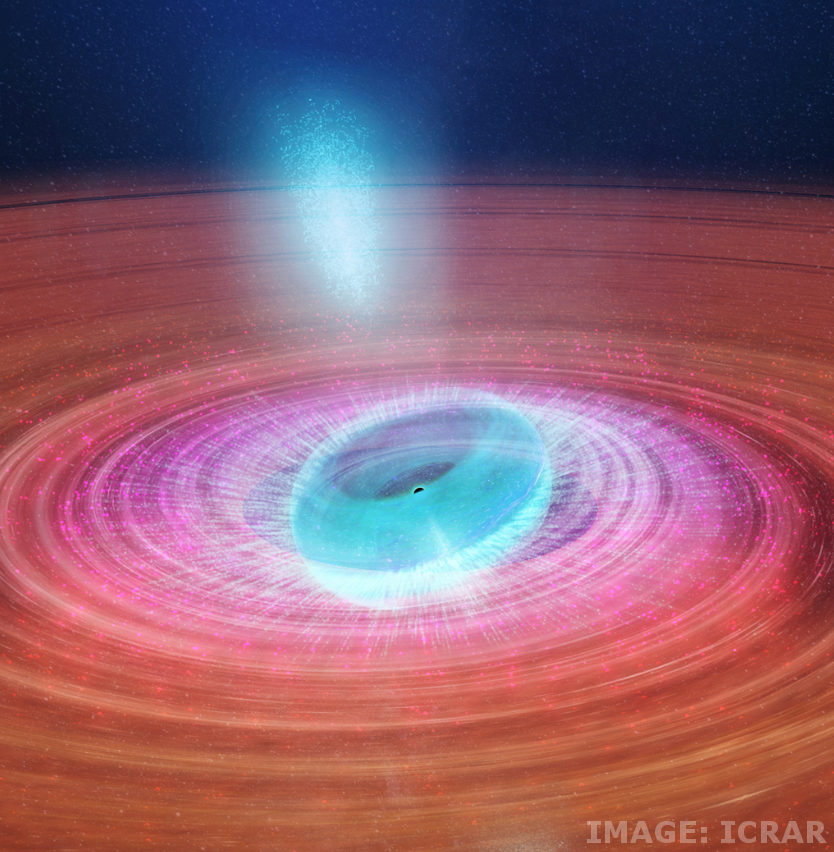Hungry black hole watched
 Australian astronomers have spotted swirling jets coming from a black hole in a “feeding frenzy”.
Australian astronomers have spotted swirling jets coming from a black hole in a “feeding frenzy”.
New research shows jets from V404 Cygni’s black hole behaving in a way never seen before on such short timescales.
The jets appear to be rapidly rotating with high-speed clouds of plasma - potentially just minutes apart - shooting out of the black hole in different directions.
Associate Professor James Miller-Jones from the Curtin University node of the International Centre for Radio Astronomy Research (ICRAR) says black holes are some of the most extreme objects in the Universe.
“This is one of the most extraordinary black hole systems I’ve ever come across,” Associate Professor Miller-Jones said.
“Like many black holes, it’s feeding on a nearby star, pulling gas away from the star and forming a disk of material that encircles the black hole and spirals towards it under gravity.
“What’s different in V404 Cygni is that we think the disk of material and the black hole are misaligned.
“This appears to be causing the inner part of the disk to wobble like a spinning top and fire jets out in different directions as it changes orientation.”
V404 Cygni was first identified as a black hole in 1989 when it released a big outburst of jets and radiation.
Astronomers looking at archival photographic plates then found previous outbursts in observations from 1938 and 1956.
Associate Professor Miller-Jones said that when V404 Cygni experienced another very bright outburst in 2015, lasting for two weeks, telescopes around the world tuned in to study what was going on.
“Everybody jumped on the outburst with whatever telescopes they could throw at it,” he said.
“So we have this amazing observational coverage.”
When Associate Professor Miller-Jones and his team studied the black hole, they saw its jets behaving in a way never seen before.
Where jets are usually thought to shoot straight out from the poles of black holes, these jets were shooting out in different directions at different times.
They were also changing direction very quickly – a matter of just a couple of hours.
Associate Professor Miller-Jones said the change in the movement of the jets was because of the accretion disk - the rotating disk of matter around a black hole.
He said V404 Cygni’s accretion disk is 10 million kilometres wide, and the inner few thousand kilometres was puffed up and wobbling during the bright outburst.
“The inner part of the accretion disk was precessing and effectively pulling the jets around with it,” Associate Professor Miller-Jones said.
“You can think of it like the wobble of a spinning top as it slows down - only in this case, the wobble is caused by Einstein’s theory of general relativity.”
The research used observations from the Very Long Baseline Array, a continent-sized radio telescope made up of 10 dishes across the United States, from the Virgin Islands in the Caribbean to Hawaii.
The new paper is accessible in PDF form, here.
Narrated V404 Cygni Black Hole Animation from ICRAR on Vimeo.







 Print
Print